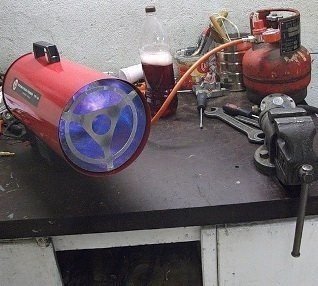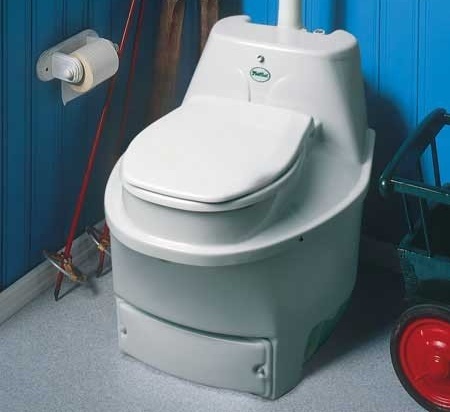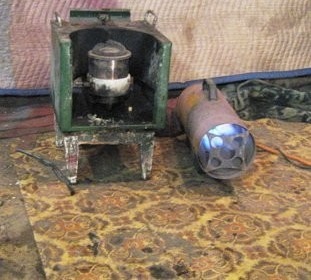Heating greenhouses and greenhouses: an overview of 5 different heating options
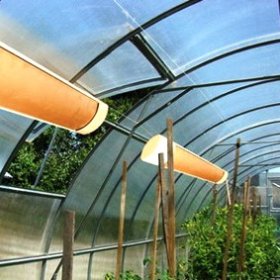
Growing seedlings, tropical exotic plants, flowers, fruits and vegetables is an unusually pleasant hobby that pleases the eye and soul for many owners of private estates. In order to fully enjoy such a hobby in our climatic conditions, properly equipped greenhouses are needed. One of the key aspects of the successful functioning of this “housing” for thermophilic plants is the year-round maintenance of comfortable conditions in it - proper lighting, ventilation, watering, optimal humidity. And, of course, a certain temperature regime, which can be ensured only by installing an effective heating system.
The market offers a variety of equipment for heating greenhouses and greenhouses - from water to air. In fairness, it is worth noting that to heat such buildings is not cheap in any case. Energy costs for heating in the cold season can reach 400 W / m2, and this is significantly more than the "gluttony" of any residential building. Why is this happening? This is easy to explain. Most of the external enclosures of greenhouses are translucent structures made of glass or plastic, which have significantly lower thermal resistance than concrete or brick walls.

The construction of the greenhouse and the installation of an effective heating system in it allows owners of private and country houses not to part with the summer all year round, enjoying the paradise view of outlandish flowers and tropical plants even in severe frosts
To reduce the need for heat, arranging a greenhouse is desirable in a well-lit and (preferably) place sheltered from the wind. When planning a winter garden at a cottage, it would be wise to place it on the south side of the building. Choosing a heating system for the "housing" of exotic and thermophilic plants follows even in the design of the structure.
Content
Option # 1 - water heating system
The most common choice is a liquid heating system, in which the coolant is water (most often) or antifreeze (less often). Among the key advantages of this solution is the uniform distribution of heat and, as a result, the active growth of plants.
The principle of operation of the water system is extremely simple - the heat carrier heated by the heating boiler is pumped through the pipeline by a circulation pump and, by means of convectors or radiators, “supplies” heat to the air and soil.
The most efficient heating of the entire volume of the room is ensured by placing pipes in several tiers. The top "pave" under the cover of the greenhouse. The middle is carried out between the rows, along the internal struts of the frame, near the outer walls. The lower one is located at the level of the soil.The soil heating system is mandatory - it should be placed at a depth of at least 40 cm, with a pitch of pipe laying from 25 cm.

When installing a water heating system in a greenhouse, instead of the usual radiators, you can use floor convectors with a sleek design and high efficiency
A boiler already installed in the house can be safely used as a heat generator; ideally, if it is gas - this is the most economical and reliable unit. Equipment with good power will easily cover the needs of both housing and the “evergreen structure”. In the event that heating of the structure during the design of the house was not planned at all, it is better to purchase a single-circuit boiler for heating plants. It would be most reasonable to place a separate heat generator in the boiler room, since specific conditions in the winter garden itself or the greenhouse can lead to sudden damage to the equipment.
The main enemy that lies in wait for the boiler in such conditions is high humidity. If the greenhouse is separate, then the heat carrier heated by the boiler must enter the building using a heat-insulated heating main. It should be constructed at a depth of not less than one and a half meters, laying an insulated pipeline in a concrete channel treated with a waterproof sealant and filled with expanded clay. Water heating of conservatories and greenhouses demonstrates high efficiency even in those regions where the climate is very, very severe. Of the minuses of the liquid system, it is worth noting the complexity of the installation, the need to acquire a mass of auxiliary equipment.
Option # 2 - we heat the room with air
If you live in a temperate region, you can consider air heating. The main elements of such a system are flexible and rigid air ducts, as well as the direct air heater (oil or gas). Redistribution fans are responsible for the redistribution of heated air in the building. The winter garden adjoining the house can be heated from equipment or stoves already installed in the house.
If funds allow, you can purchase a heat source for an air heating system air-to-air heat pump. VTs have a number of advantages over other heat generators - sufficient efficiency, ease of installation, a high degree of automation, a wide range of operating modes.
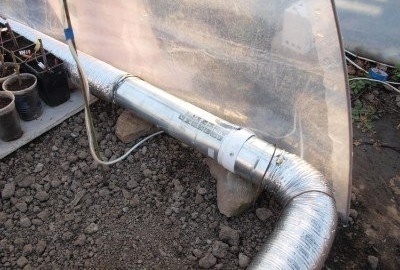
One of the key advantages of air heating is low inertia and high efficiency - only 40 minutes and the air temperature in the greenhouse rises by 15 degrees. The effect is observed even with open transoms
Air heating is characterized by the ability to quickly increase the temperature in the room to the required values. However, due to insufficient power it is recommended to “combine” it with other systems.
Option # 3 - infrared heating of plants
Electric and gas infrared heaters are very popular. With IR heating, heat is transferred primarily to plants, and not to air - this is its main difference from convective heating. Thanks to infrared units, it is easy to organize in the greenhouse many temperature zones for growing plants with different climate requirements.
Electric infrared heaters are compact and extremely easy to install, which makes them a pretty attractive solution. But their operation, as a rule, “flies a penny” due to the high cost of electricity. If your greenhouse has a large area, heating it with such equipment is a real ruin.
Option # 4 - electric soil heating
Electric heating of the soil allows you to put the greenhouse into operation somewhat faster than with other heating systems. Also, it is characterized by such advantages:
- uniform heating of the entire area of the structure;
- minimum installation costs;
- low labor costs for system maintenance;
- relative profitability;
- elementary management.
In fact, this is a kind of analogue of "warm floors", often installed in residential premises. For its arrangement, they organize a layer of waterproof thermal insulation, sand is poured on top with a layer of 5 cm, lay a cable with a pitch of at least 12 cm, form another same sand layer; a protective mesh netting is placed on top of the sand.
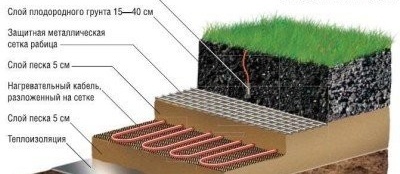
The power of the resistive cable for electrical heating of the soil should be no more than 15 W / m - otherwise the root system of the plants can dry out
Option # 5 - Combined System
Combined heating provides for effective combinations of various types of heating - infrared and air, water and electric, etc. The disadvantages of one system in this situation are covered by the advantages of another.
It is important to note that with combined heating your greenhouse will be insured against any adversity. With a backup heat source, an excellent harvest will be provided to you all year round. By erecting a greenhouse or conservatory, many homeowners expect to not only grow fruits, berries and flowers there, but also spend a lot of their free time enjoying the wonderful atmosphere created by plants. In order for the microclimate in the building to be ideal, an incredible number of factors should be taken into account. It is not always possible to do everything correctly independently, therefore, when deciding, in particular, the issue of heating the greenhouse, do not neglect, if not the help, then at least the consultation of specialists. A competent professional opinion will help to avoid mistakes in such a sensitive issue.
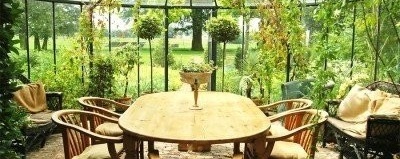
The heated greenhouse can become a reliable "supplier" of environmentally friendly vegetables and fruits for the table, and its microclimate definitely has a beneficial effect on human well-being
Greenhouses, conservatories - a great place to relax, blurring the boundaries between a stone house-fortress and nature, here you can receive guests and spend a romantic evening. A heated, comfortable greenhouse is not only incredibly beautiful, but also good for your health!
